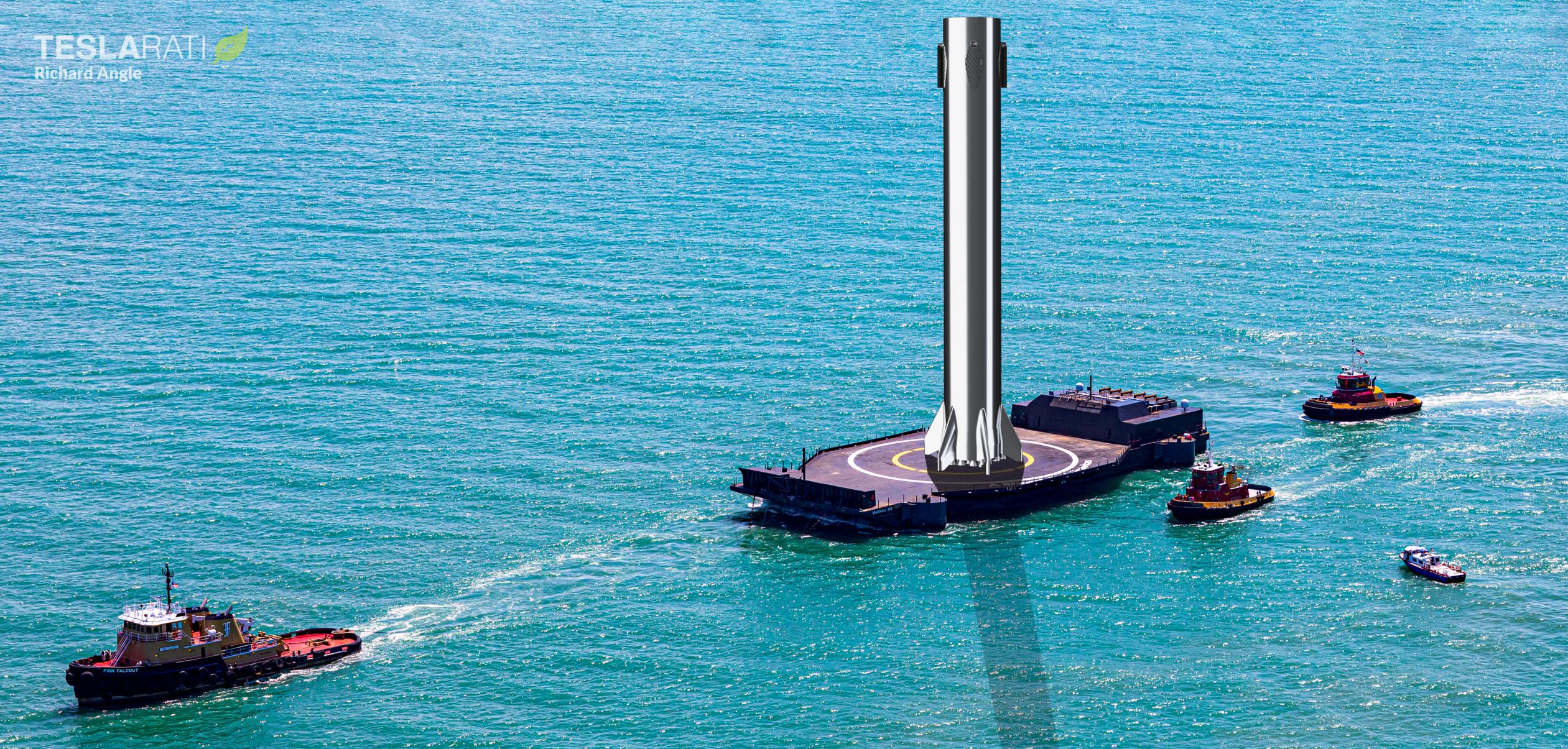
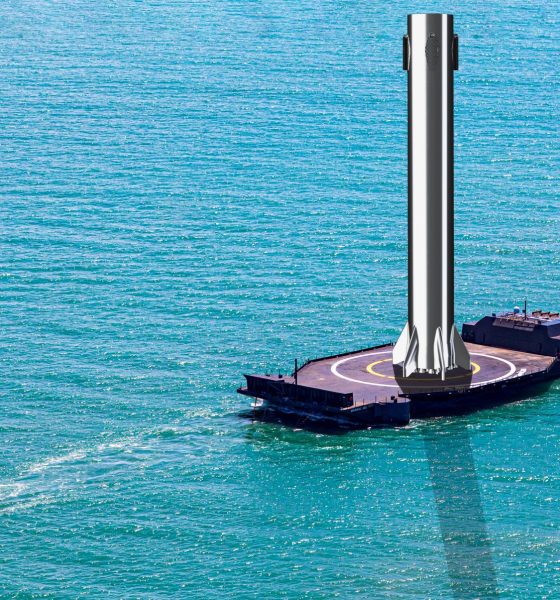
News
SpaceX reveals Starship “marine recovery” plans in new job postings
In a series of new job postings, SpaceX has hinted at an unexpected desire to develop “marine recovery systems for the Starship program.”
Since SpaceX first began bending metal for its steel Starship development program in late 2018, CEO Elon Musk, executives, and the company itself have long maintained that both Super Heavy boosters and Starship upper stages would perform what are known as return-to-launch-site (RTLS) landings. It’s no longer clear if those long-stated plans are set in stone.
Oddly, despite repeatedly revealing plans to develop “marine recovery” assets for Starship, SpaceX’s recent “marine engineer” and “naval architect” job postings never specifically mentioned the company’s well-established plans to convert retired oil rigs into vast floating Starship launch sites. Weighing several thousand tons and absolutely dwarfing the football-field-sized drone ships SpaceX recovers Falcon boosters with, it goes without saying that towing an entire oil rig hundreds of miles to and from port is not an efficient or economical solution for rocket recovery. It would also make very little sense for SpaceX to hire a dedicated naval architect without once mentioning that they’d be working on something as all-encompassing as the world’s largest floating launch pad.
That leaves three obvious explanations for the mentions. First, it might be possible that SpaceX is merely preparing for the potential recovery of debris or intact, floating ships or boosters after intentionally expending them on early orbital Starship test flights. Second, SpaceX might have plans to strip an oil rig or two – without fully converting them into launch pads – and then use those rigs as landing platforms designed to remain at sea indefinitely. Those platforms might then transfer landed ships or boosters to smaller support ships tasked with returning them to dry land. Third and arguably most likely, SpaceX might be exploring the possible benefits of landing Super Heavy boosters at sea.
Through its Falcon rockets, SpaceX has slowly but surely refined and perfected the recovery and reuse of orbital-class rocket boosters – 24 (out of 103) of which occurred back on land. Rather than coasting 500-1000 kilometers (300-600+ mi) downrange after stage separation and landing on a drone ship at sea, those 24 boosters flipped around, canceled out their substantial velocities, and boosted themselves a few hundred kilometers back to the Florida or California coast, where they finally touched down on basic concrete pads.
Unsurprisingly, canceling out around 1.5 kilometers per second of downrange velocity (equivalent to Mach ~4.5) and fully reversing that velocity back towards the launch site is an expensive maneuver, costing quite a lot of propellant. For example, the nominal 25-second reentry burn performed by almost all Falcon boosters likely costs about 20 tons (~40,000 lb) of propellant. The average ~35-second single-engine landing burn used by all Falcon boosters likely costs about 10 tons (~22,000 lb) of propellant. Normally, that’s all that’s needed for a drone ship booster landing.
For RTLS landings, Falcon boosters must also perform a large ~40-second boostback burn with three Merlin 1D engines, likely costing an extra 25-35 tons (55,000-80,000 lb) of propellant. In other words, an RTLS landing generally ends up costing at least twice as much propellant as a drone ship landing. Using the general rocketry rule of thumb that every 7 kilograms of booster mass reduces payload to orbit by 1 kilogram and assuming that each reusable Falcon booster requires about 3 tons of recovery-specific hardware (mostly legs and grid fins) a drone ship landing might reduce Falcon 9’s payload to low Earth orbit (LEO) by ~5 tons (from 22 tons to 17 tons). The extra propellant needed for an RTLS landing might reduce it by another 4-5 tons to 13 tons.
Likely less than coincidentally, a Falcon 9 with drone ship booster recovery has never launched more than ~16 tons to LEO. While SpaceX hasn’t provided NASA’s ELVPerf calculator with data for orbits lower than 400 kilometers (~250 mi), it generally agrees, indicating that Falcon 9 is capable of launching about 12t with an RTLS landing and 16t with a drone ship landing.
This is all to say that landing reusable boosters at sea will likely always be substantially more efficient. The reason that SpaceX has always held that Starship’s Super Heavy boosters will avoid maritime recovery is that landing and recovering giant rocket boosters at sea is inherently difficult, risky, time-consuming, and expensive. That makes rapid reuse (on the order of multiple times per day or week) almost impossible and inevitably adds the cost of recovery, which could actually be quite significant for a rocket that SpaceX wants to eventually cost just a few million dollars per launch. However, so long as at-sea recovery costs less than a few million dollars, there’s always a chance that certain launch profiles could be drastically simplified – and end up cheaper – by the occasional at-sea booster landing.
If the alternative is a second dedicated launch to partially refuel one Starship, it’s possible that a sea landing could give Starship the performance needed to accomplish the same mission in a single launch, lowering the total cost of launch services. If – like with Falcon 9 – a sea landing could boost Starship’s payload to LEO by a third or more, the regular sea recovery of Super Heavy boosters would also necessarily cut the number of launches SpaceX needs to fill up a Starship Moon lander by a third. Given that SpaceX and NASA have been planning for Starship tanker launches to occur ~12 days apart, recovering boosters at sea becomes even more feasible.
In theory, the Starship launch vehicle CEO Elon Musk has recently described could be capable of launching anywhere from 150 to 200+ tons to low Earth orbit with full reuse and RTLS booster recovery. With so much performance available, it may matter less than it does with Falcon 9 and Falcon Heavy if an RTLS booster landing cuts payload to orbit by a third, a half, or even more. At the end of the day, “just” 100 tons to LEO may be more than enough to satisfy any realistic near-term performance requirements.
But until Starships and Super Heavy boosters are reusable enough to routinely launch multiple times per week (let alone per day) and marginal launch costs have been slashed to single-digit millions of dollars, it’s hard to imagine SpaceX willingly leaving so much performance on the table by forgoing at-sea recovery out of principle alone.

News
Tesla is making a change to its exterior cameras with a potential upgrade
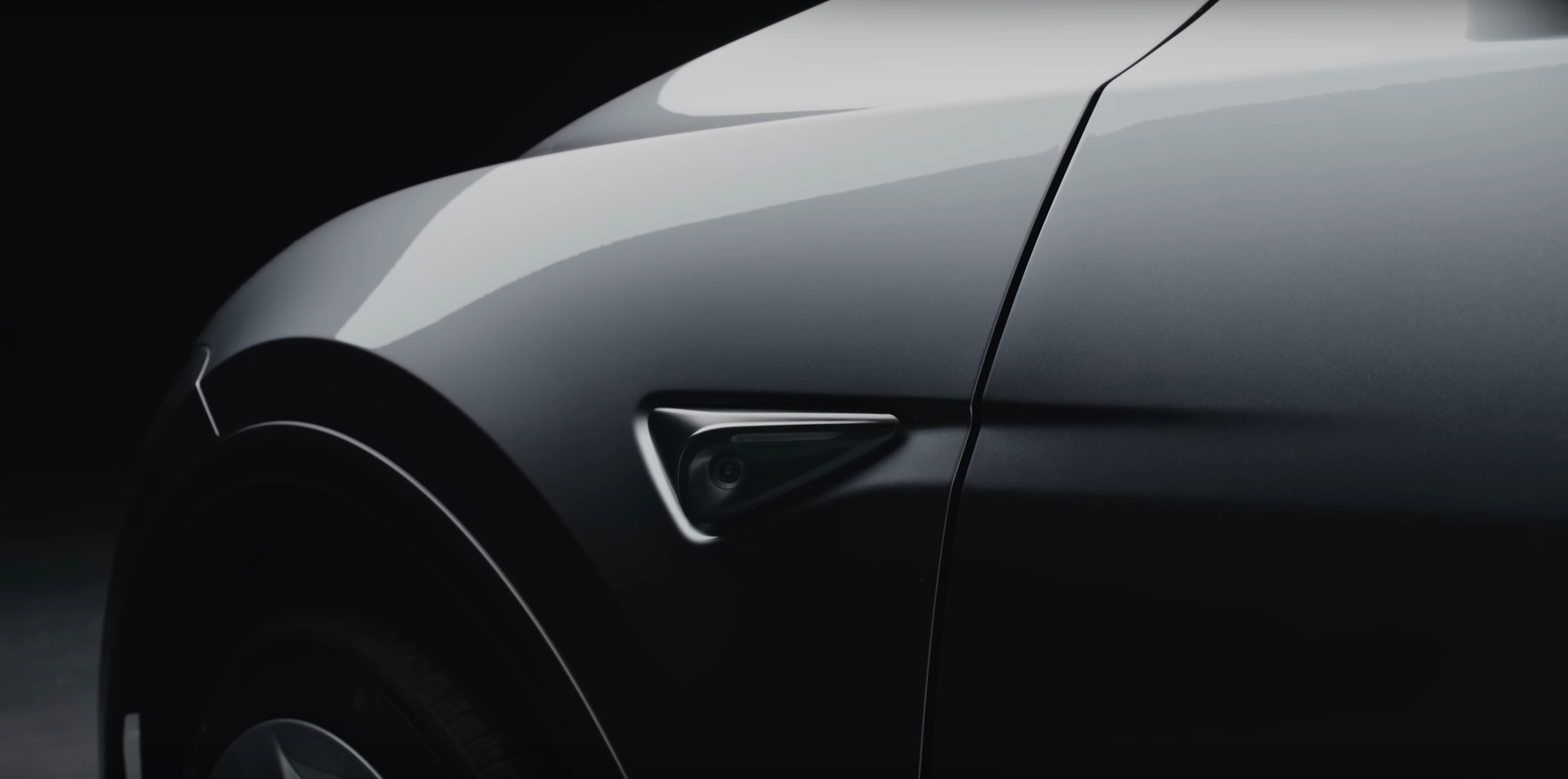
Tesla appears to be making a change to its exterior side repeater cameras, which are used for the company’s Full Self-Driving suite, and other features, like Sentry Mode.
The change appears to be a potential upgrade in preparation for the AI5 suite, which CEO Elon Musk said will be present on a handful of vehicles next year, but will not be widely implemented until 2027.
Currently, Tesla uses a Sony sensor lens with the model number IMX963, a 5-megapixel camera with better dynamic range and low-light performance over the past iteration in Hardware 3 vehicles. Cameras in HW3 cars were only 1.2 megapixels.
However, Tesla is looking to upgrade, it appears, as Tesla hacker greentheonly has spotted a new sensor model in its firmware code, with the model number IMX00N being explicitly mentioned:
Looks like Tesla is changing (upgrading?) cameras in (some?) new cars produced.
Where as HW4 to date used exterior cameras with IMX963, now they (might potentially) have something called IMX00N— green (@greentheonly) December 1, 2025
Sony has not announced any formal specifications for the IMX00N model, and although IMX963 has been used in AI4/HW4 vehicles, it only makes sense that Tesla would prepare to upgrade these external cameras once again in preparation for what it believes to be the second hardware iteration capable of fully autonomous self-driving.
Tesla has maintained that AI4/HW4 vehicles are capable of self-driving operation, but AI5 will likely help the company make significant strides, especially in terms of overall performance and data collection.
Tesla last updated its exterior cameras on its vehicles back in early 2023, as it transitioned to the 5-megapixel IMX963. It also added additional cameras to its vehicles in January with the new Model Y, which featured an additional lens on the front bumper to help with Full Self-Driving.
Tesla’s new self-driving computer (HW4): more cameras, radar, and more
News
Tesla Model Y Standard Full Review: Is it worth the lower price?
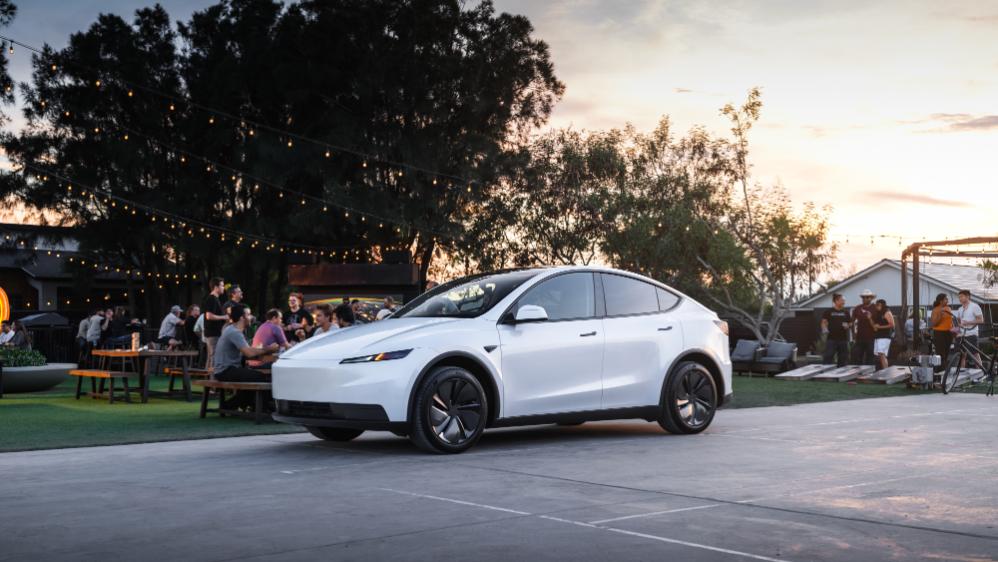
Tesla launched the Model Y Standard as an attempt to offer affordable electric vehicles to consumers now that the $7,500 EV tax credit is gone. We were able to spend four days with the car, and it was more than enough time to determine whether or not the car was worth the $9,000 discount compared to the Premium All-Wheel-Drive configuration, which is what I drive daily.
The Model Y Standard was stripped of some of the features that are present in the Premium trims of the Model Y: no glass roof, a sound system with roughly half the speakers, fewer acoustic-lined glass windows, less storage, and less functionality from an interior standpoint.
However, there are some real advantages to purchasing a Standard Model Y, and there are a handful of situations where this car would be well-suited.
Do I think it is worth the lower price? Well, I’ll get to that later in this article.
Initial Thoughts
In my first impressions review of the Model Y Standard, I talked about the face-value differences between my Model Y Premium and the new, more affordable trim. You will first notice the lack of storage between the front two seats, as the cupholder and additional storage bin sliding doors are void. You still get the cupholders, but they are exposed, which isn’t a huge deal, but it definitely takes away from the sleek look the Premium trim offers.
Additionally, the textile seats replace those of the vegan leather that is available in the upper-level trims. I mentioned previously that I could take or leave the vegan leather for the textile seats, as they are easy to clean, quick drying, and hide oils from your skin much better than leather does.
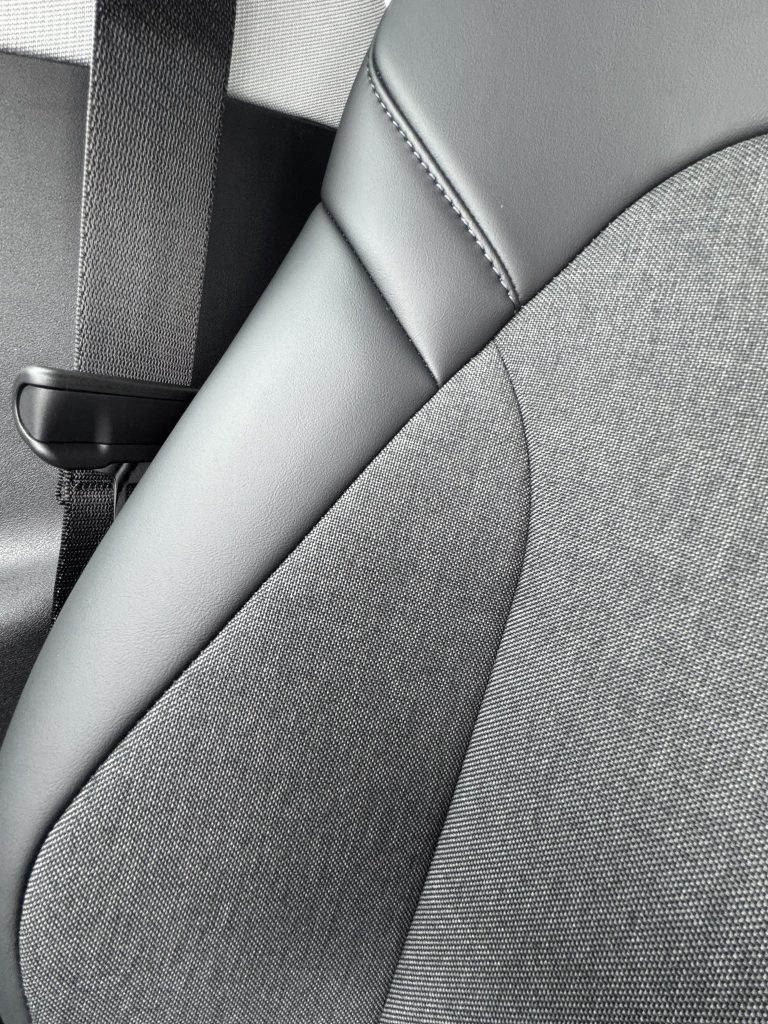
However, there comes one big sacrifice that I have been spoiled by, as the textile seats are not ventilated, so say goodbye to cooling your keister in the Summertime.
The lack of a glass roof is something many owners might not even notice. However, I have been spoiled by the glass roof in my car, and I look out of it every time I’m in my car. It is one of my favorite features, without a doubt. While it would not be a dealbreaker for me, it would be something I would miss terribly.
Things I Noticed After Several Days
Cabin Noise
One of the biggest things I noticed after the first two days in the Model Y Standard is that the cabin is much louder than the Premium. This is because Tesla did not acoustically line all of the glass in the Standard configuration, as it did in the Premium. The side windows are not treated, just the windshields. Therefore, you notice the noise level in the cabin is louder than in the Premium.
If you had not been driving in a Premium trim for a few months, you might not notice it. However, it is something that is a big sacrifice when moving to a different trim level, especially one that is less premium than what you might currently drive.
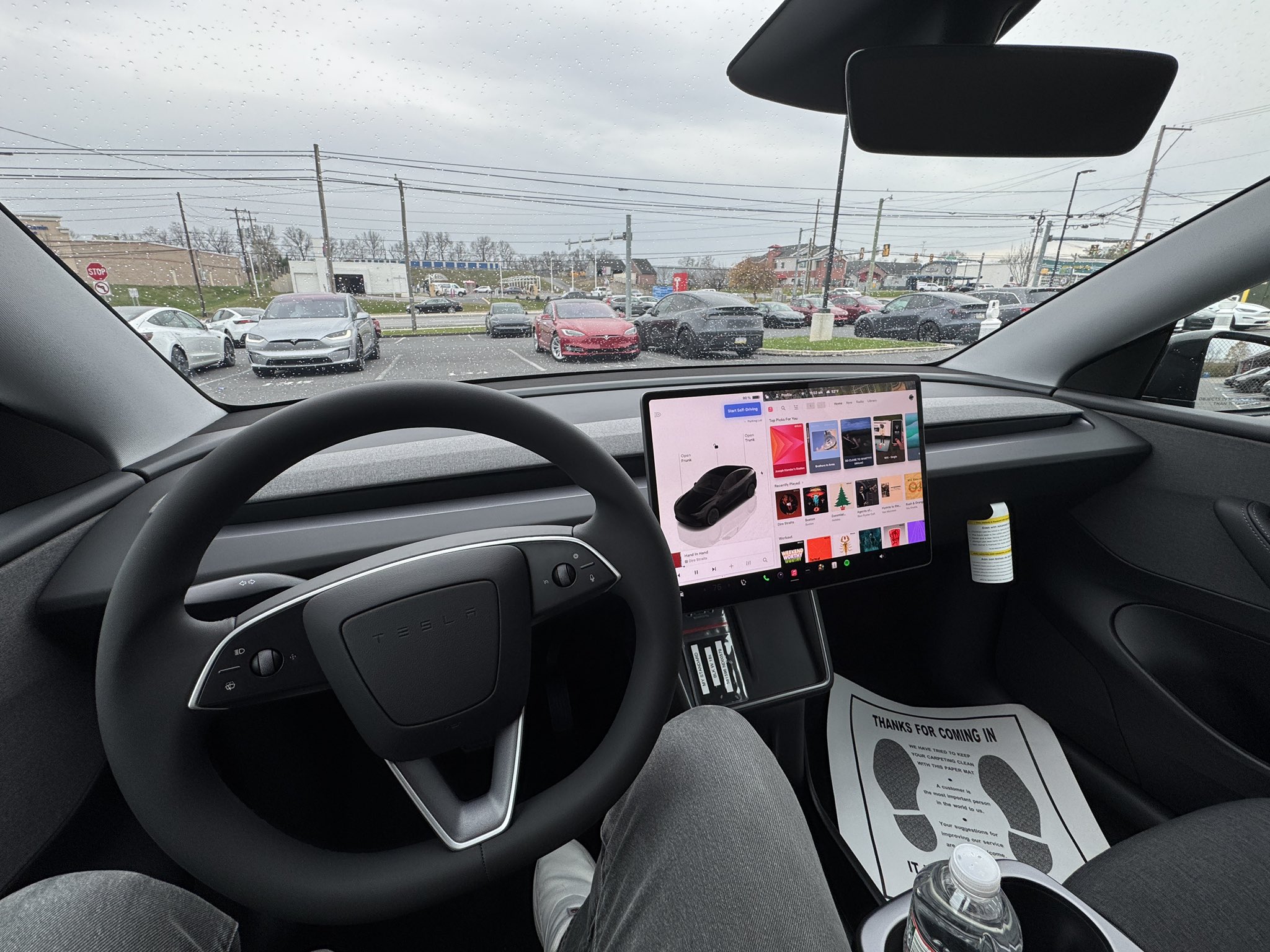
I have always been so shocked at how amazingly quiet the Premium trim’s cabin is; my Model Y is extremely peaceful, even when I’m sitting in bumper-to-bumper traffic, and people have modified mufflers and exhaust systems, tractor-trailers are going by, or crotchrockets are zipping by on the interstate.
This is a huge difference between the two cars, and it is something that is really hard to get used to. I know, first-world problems, right? But when you’re paying between $39,990 and $48,990 for a car, those little things truly do matter.
Stereo System Differences
Another thing I was very aware of was how weak the sound system is. I think if I had bought a Standard Model Y, I would have looked at having the speakers and subwoofers upgraded; I was almost disappointed in how much of a change it was between the two cars.
When I finally picked up my Model Y Premium on Friday (which had been detailed by the awesome team at Tesla Mechanicsburg), the first thing I did was crank up the volume and listen to some music. I really missed having a premium sound system.
Ride Quality
There are virtually no differences between the two cars in terms of ride quality. They are both extremely fun to drive, and the suspension in the Model Y Standard feels perhaps a little bit stiffer than the Premium. Regardless, I didn’t truly notice all that much of a change.
Driving this car around windy roads and tight turns was just as fun as my Model Y Premium. It was a blast to test out, and the slight change in feel was welcome. It’s always fun to drive new cars.
Performance
This is the first EV I’ve ever ridden in where I did not feel that awesome sensation of instant torque. It’s still a quick car, but it is missing that pep in its step that many of us have become accustomed to.
If you want to get someone’s true reaction to EV acceleration, let me just put it this way: This is not the car to do it in.
Some Little-Known Facts About the Model Y Standard
Most of us know that the Model Y Standard has a glass roof, but it is opaque, so even if you took out the headliner, you still would not see out of it. However, there is an interesting little tidbit from a Service perspective that does not make much sense.
If the Model Y glass roof cracks or is broken and needs to be replaced, Service is required to pull off the entire headliner and topside interior to access the glass. It cannot be replaced from the outside. In the Premium, because the glass is exposed, it is a much simpler process to replace the glass. This was an interesting thing I learned.
Additionally, the seat controls are only available on the center screen, which makes it difficult to adjust the seat if you are larger than the person who sat in the car previously. In order to adjust the seat, you’ll have to lean over the chair, access the controls from the screen, and adjust it manually before getting in.
Is the Tesla Model Y Standard Worth the Cheaper Price?
For an additional $9,000 to buy the Model Y Premium AWD, you would get a more capable powertrain, a quieter cabin, better performance, an upgraded interior, more storage, a better sound system, and more luxury features.
To me, the Standard is a car that seems extremely ideal for a teenager’s first vehicle (I got a $1,500 1998 VW Jetta K2 with 200,000 miles when I was 16), or a fleet vehicle. This would be the perfect car for salespeople to use: it does not have all the bells and whistles, it is efficient, and it is just what is needed to drive around to meetings.
For a personal car, it really depends on what you think you need. Admittedly, I’ve been spoiled by the Premium configuration, and personally, I wouldn’t go down to the Standard after owning a Premium trim.
News
Tesla’s new Holiday perk is timed perfectly to make FSD a household name
Tesla AI4 owners get FSD (Supervised) through Christmas, New Year’s Eve and well into the post-holiday travel season.

Tesla quietly rolled out a free Full Self-Driving (Supervised) trial for roughly 1.5 million HW4 owners in North America who never bought the package, and the timing could very well be genius.
As it turns out, the trial doesn’t end after 30 days. Instead, it expires January 8, 2026, meaning owners get FSD (Supervised) through Christmas, New Year’s Eve and well into the post-holiday travel season. This extended window positions the feature for maximum word-of-mouth exposure.
A clever holiday gift
Tesla watcher Sawyer Merritt first spotted the detail after multiple owners shared screenshots showing the trial expiring on January 8. He confirmed with affected users that none had active FSD subscriptions before the rollout. He also observed that Tesla never called the promotion a “30-day trial,” as the in-car message simply reads “You’re Getting FSD (Supervised) For the Holidays,” which technically runs until after the new year.
The roughly 40-day period covers peak family travel and gatherings, giving owners ample opportunity to showcase the latest FSD V14’s capabilities on highway trips, crowded parking lots and neighborhood drives. With relatives riding along, hands-off highway driving and automatic lane changes could become instant conversation starters.
Rave reviews for FSD V14 highlight demo potential
FSD has been receiving positive reviews from users as of late. Following the release of FSD v14.2.1, numerous owners praised the update for its smoothness and reliability. Tesla owner @LactoseLunatic called it a “huge leap forward from version 14.1.4,” praising extreme smoothness, snappy lane changes and assertive yet safe behavior that allows relaxed monitoring.
Another Tesla owner, @DevinOlsenn, drove 600 km without disengagements, noting his wife now defaults to FSD for daily use due to its refined feel. Sawyer Merritt also tested FSD V14.2.1 in snow on unplowed New Hampshire roads, and the system stayed extra cautious without hesitation. Longtime FSD tester Chuck Cook highlighted improved sign recognition in school zones, showing better dynamic awareness. These reports of fewer interventions and a more “sentient” drive could turn family passengers into advocates, fueling subscriptions come January.









